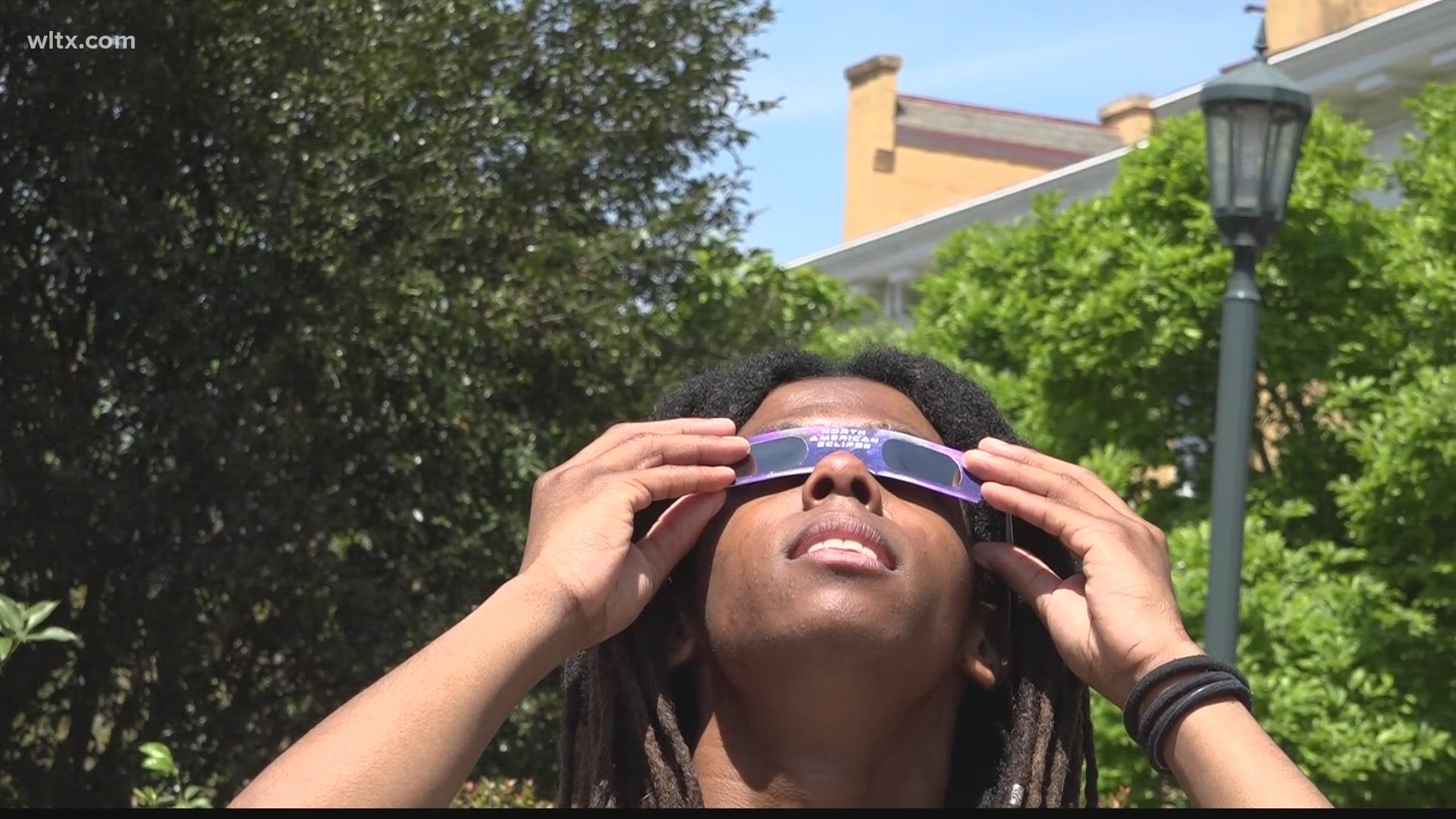COLUMBIA, S.C. — Hundreds of visitors made their way to the Melton Observatory on University of South Carolina's campus as South Carolina to get a view of Monday's solar eclipse.
USC students got to see the partial eclipse at the Melton Observatory on USC's campus, while some parts of the country got to see a total solar eclipse. Columbia was in 77% coverage, while back in 2017, South Carolina witnessed a total solar eclipse, meaning 100% of the sun was blocked.
"I remember that like it was yesterday," USC freshman Aaron Jacobs said in relation to the 2017 eclipse. "My mom brought home glasses because my school was off that day, and I went to the backyard and watched it from the grass."
Monday's eclipse, which started around midday, drew a line of enthusiastic visitors to the Melton Observatory where they were able to witness the rare astronomical event as the moon passed between the Sun and the Earth.
"I'm giving them a view, a safe view, of the eclipse through the telescope," said Andrew Levy, the Observatory Coordinator for the Astronomy Club at USC.
Levy showed Melton Observatory visitors the beauty of the eclipse by directing them to the C-8 telescope, one of three the observatory has.
"It's safe because there is a solar filter on here which blocks out a lot of light except for a small amount the sun is emitting, so you're really seeing the shadow of the moon, so it's not dangerous," Levy explained.
Watching the eclipse did not have to solely involve looking into the sky; rather, looking at its reflection through what's called a Sunspotter is just as extraordinary, according to Astronomy Club member Evelyn Crider.
"You have to line it up so that the sun shines in through this hole and these two little holes, which you then line the spots of light up with these rings here. The light then reflects off a couple of mirrors onto the page so you can see the sun and any shadows that appear on it. So this big shadow is the moon obviously and the smaller ones are sunspots," Evelyn said as she explained the Sunspotter contraption.
"It's pretty significant, we do not have a lot of eclipses that happen in America, the next one isn't until 2044. So to be able to see it, especially here with all the technology we have, it's pretty nice," Levy said.
The next total solar eclipse in North America won't be until 2044, but once again, South Carolina will only see a partial eclipse. The path of totality that year will pass over places such as North and South Dakota, Montana, as well as parts of Northern Canada.

